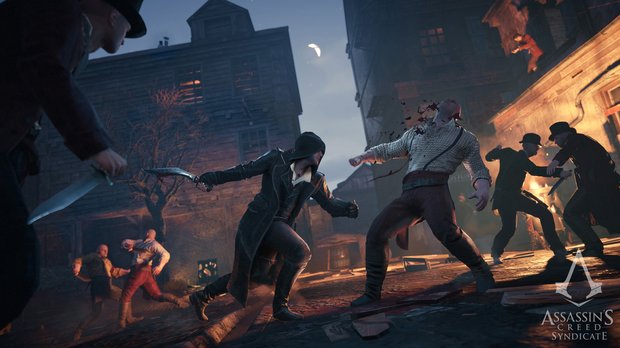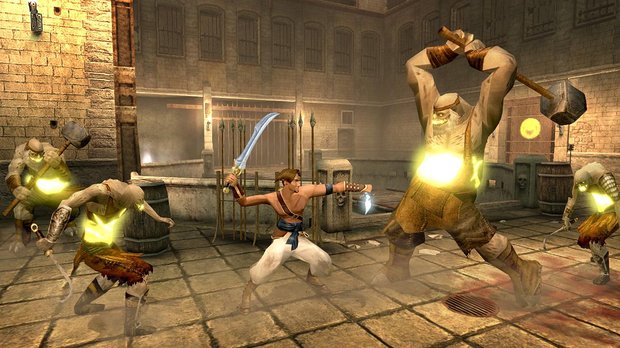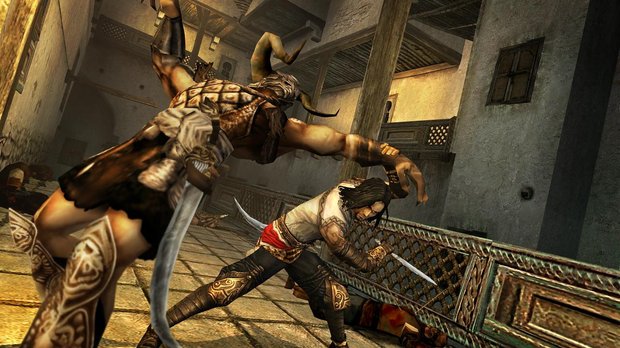An Assassins Creed reboot is the perfect opportunity to resurrect Prince of Persia
It looks like Assassin’s Creed is taking a year out for a reboot, then. Okay, it hasn’t officially been confirmed, but in this industry there’s little stronger confirmation than a lack of corporate denial after a week or two of leak-driven rumours. Having delivered annual installments since 2009 - with Ubisoft’s ever-growing, international, multi-studio structure set up to accommodate the feat - a year-long break is quite the big deal. If the series is breaking with tradition - and, in fact, a fundamental part of its identity - then surely some fairly significant work must be afoot.

It’s becoming clear that Ubisoft understands the limitations of the existing series model, evident by the garnishes it has layered over the top of it lately, in lieu of being able to stop for a full rebuild. That trademark, open-world traversal, for example. Assassin’s Creed has always been great at scale and spectacle, less so at satisfying intricacy. The notion of ‘hold forward, climb over everything’ has long been a clichéd stick with which to hit the series, but there is a seed of truthful criticism at its core. Where once AC’s parkour was innovative, in an age where Uncharted exists and continues to evolve, Batman has gone open-world (three times) and subsequently retired, and even Doom is bringing smooth, immediate ledge-climbing to its next installment, that specialness is long forgotten. The series’ once-groundbreaking feature is no longer enough to sustain it.
The solution? Assassin’s Creed needs a new approach. Robbed by time of its sparkle, it needs to add some new substance to its style. To do that, it needs to give the player more agency, more control, and more explicit options. It needs to deliver more meaningful tools, alongside a suite of new things to do with them. And I reckon it can deliver all of that handsomely by looking into the series’ past, and particularly at its once most heated rivalry.
Right from its inception, Assassin’s Creed had a tense relationship with Ubisoft’s previous purveyor of parkour platforming, Prince of Persia. In fact it was originally prototyped as a PoP spin-off itself before hurtling off in its own, raucously prolific direction. That shared DNA is still clearly present and correct in the series’ historical settings, bladed combat and ever-present clambering. For a while after its arrival, Creed sat awkwardly alongside PoP on Ubi’s starting bench, the two series shooting each other uncomfortable glances until eventually, one had to be called up for the big-time. Of course, the younger player won star placing, leaving its progenitor in the sand.

There was of course an attempt at mutual understanding back in 2008, when Ubisoft tried to blend the games’ styles in a fresh Prince of Persia reboot, releasing what was hoped to be the start of a glorious new era for the wall-running royal. But ultimately it wasn’t to be. PoP’s previous delight in precise, twitchy handling and intricate, dangerous, 3D puzzle-box environments just didn’t gel with the addition of Assassin’s Creed’s more broad-strokes, streamlined traversal. Where the Sands of Time trilogy’s more demanding but nuanced controls bring complexity, they also facilitate deep, gratifying play. They're vital to navigating the kind of level design that PoP revels in.
But with Assassin’s-style control applied, it just didn’t work. Divorced from a real open-world, that style of traversal mandated largely linear, literally straightforward platforming and a fair degree of hand-holding. It was, alas, a worst-of-both-worlds situation, AC’s controls flailing for a purpose without a wide, open city to explore, and the Prince’s versatility downgraded through a lack of granular capability. After PoP 2008, we got a brief hark back to the Prince’s glory days in ‘forgotten’ Sands of Time sequel The, er, Forgotten Sands, after which the series’ conceits seemed to be finally laid to rest.
But you know what? It needn’t remain that way. Because I think the exchange of ideas between the two series can really work the other way around. In fact, I suspect that a bit of PoP-spiration can help deliver exactly what an Assassin’s Creed refresh needs. And not just because the reported ancient Egyptian setting is getting a lot closer to the Prince’s old stomping ground.
Weekly digests, tales from the communities you love, and more

Let’s think about what needs to remain in order to maintain the essence of Assassin’s Creed. It needs a vast, thriving, historical open-world. It needs skirmish-focused melee combat. It needs to be built around engaging, vertically-minded traversal. It strikes me that Sands of Time-era Prince of Persia can help revitalise all of these - without losing anything that AC’s fans love - if Ubisoft applies its ways more thoughtfully and sympathetically than during the last attempt at cross-pollination.
That open-world traversal, for example. The rumoured Egyptian outing is a great opportunity to change focus. As Lou points out in her excellent breakdown, with less available tech in the setting, an ancient Egyptian protagonist will have to rely much more on their direct physical abilities, and that opens up a wide path for PoP-flavoured augmentations. Rope-launchers, steam-trains, and pistols will be right out, meaning that – more than any other AC before – this one will have to be defined by the abilities of its protagonist’s arms and legs. As such, platforming and combat are going to have to take a step up.
How about we have a hybrid control scheme, in which a traditional ‘mantle everything’ button can over-ride a more ‘detailed’ set of new traversal controls? We’d maintain AC’s grandiose, flowing, rooftop chases and escapes, but also open up the facility for something more intimate and purposeful, a la PoP – the traditional broad, cinematic sweep maintained, but augmented with something more meaty and structurally satisfying, too.

Because with the option of more precise, deliberate control coupled with an ancient world famed for its tombs and catacombs, well, by now you can probably see where I’m going here. A huge AC overworld, filled with a tuned-up version of the series’ traditional conceits – its urban areas spiced up with the more intricate design the new control system would allow – but also littered with more elaborate, ‘dungeon’-style indoor areas. Places that balance out the Creed overworld’s smooth, swift flow with slower, more complex, slightly more thoughtful challenges. A bit like the way the open-world Arkham games are laid out, only with zero bat-gadgets and a good deal more clever jumping and stabbing.
And I don’t mean for those elements to appear in isolation either. Because PoP can really accelerate another area that AC could do with evolving. The blending of traversal and combat. Think back to Warrior Within, The Sands of Time’s first, much-maligned but actually brilliant sequel. Ignore all the angsty, emo guff and the general aura of throbbing metallic dourness, and WW is a perfect follow-up. It recognises that the first game’s jungle gym platforming was already perfected, and so focuses wholeheartedly on making the combat as dynamic and deliriously versatile as possible.
It’s a game where even the simplest sword-fights deliver more branching possibilities than a Telltale dialogue tree. With disarms, weapon-steals, weapon throws, enemy mantling, enemy mantling into throws (into other enemies), enemy mantling into air-executions, ground-sweeps, environmental kills, takedowns from wall-jumps, takedowns while swinging around pillars, and multiple stealth-kill options from the ground or high, high above, it’s basically SSX with weapons. Honestly, it makes Batman look like Double Dragon.

But the most important part is that the level of control it hands to you over AC’s current model provides way, way more inter-connecting systems at any given time. Apply a similar philosophy to Assassin’s Creed, with PoP’s control options blended with AC’s navigation, and we’d have one hell of a classy and cool set-up of movement and mauling. Every swan-dive could be the bone-crushing entrance to a fight. Every rope or pole swing could become a kick in the face. Every wall-run (because let’s face it, we’re putting wall-runs in this imaginary reboot) could set up a barrage of thrown bombs or hurled daggers in the direction of unsuspecting enemies in the streets below. It would, whether partaken of in an intricate subterranean puzzle or a breezy, rooftop assault, be deliciously, cleverly exhilarating.
And fresh, clever exhilaration is exactly what an Assassin’s Creed reboot needs. The series already has a solid foundation and framework. Its over-arching mythology is locked in. There’s a hell of a canvas to work on. But over years of repetition, predictability has made for a less distinct experience. The canvas has not become blank, but the colours have faded. But that just means that there’s now a vast opportunity to reinvigorate it by filling in some detail. And the best way to do that might just be to infuse that Egyptian desert with a different kind of sand, one that’s been forgotten for a little too long.



